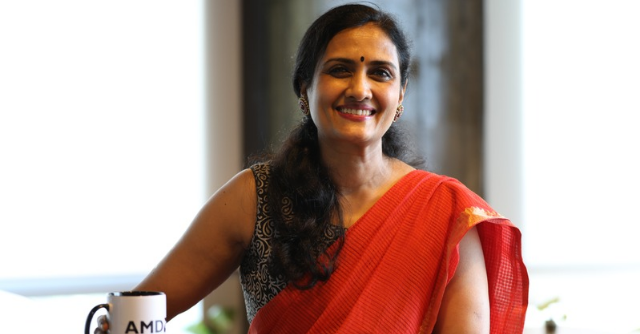
Our AI group expanding rapidly, FPGAs key part of operations: AMD India's Jaya Jagadish


As digital technologies increasingly permeate both personal and business spheres, the demand for semiconductors has surged. According to a McKinsey report, the semiconductor industry is expected to experience annual growth averaging 6-8% through 2030, positioning it to become a trillion-dollar industry by the end of the decade.
Nvidia has capitalised on the artificial intelligence (AI) boom with chip and platform releases designed for high-compute AI tasks, including the Blackwell platform, which offers four times the performance of its H100 chips. This success briefly made Nvidia the world's most valuable company in June, with a market cap of $3.335 trillion. However, its rapid growth has sparked doubts on the company’s monopolistic position. This eventually led antitrust scrutiny from the US Department of Justice and FTC, alongside Microsoft and OpenAI, according to The New York Times’ June report.
Other players in the industry, including fabless chip company AMD are stepping on the gas to emerge as a strong player in the ecosystem with its MI300 chip positioned to challenge Nvidia’s H100 GPUs. MI300 also became ‘fastest-ramping’ in the company’s history, generating more than $1 billion in “total sales in less than two quarters”, CEO Lisa Su said during the financial earnings call for the quarter ending March 30.

“Monopolies doesn’t benefit anyone — real competition is driven by having credible products that compete on merit. It’s about who can deliver the better product, and that’s where AMD plays a crucial role—providing alternatives and helping to prevent monopolistic dominance,” AMD India head Jaya Jagadish told TechCircle.
“We've fought hard to rise through the ranks, and we've firmly established ourselves in the semiconductor industry. About 15 years ago, we hit rock bottom, but from that low point, we’ve made an impressive comeback. Today, we are recognised as a strong player in the ecosystem, and our partners and customers acknowledge this.”
The Austin-based company established its India office two decades back. AMD India now has established teams across nearly every business unit, focusing heavily on IP development and system-on-chip (SoC) design. The company is also expanding our software capabilities, which is a growing focus. Additionally, significant new investments are being made in AI. AMD’s AI group is expanding rapidly, and following the acquisition of Xilinx three years ago, FPGAs have become a key part of the operations here, Jagadish said.

She further added that AMD is expected to be a major contributor to the India AI Mission. The Union Cabinet has approved ₹10,000 crore towards the mission, of which more than ₹4,500 crore is intended for compute capacity. AMD is already in touch with the government regarding this. MeitY also released a tender for empanelment of entities to procure GPUs for the proposed GPU Cluster, in August.
AMD India’s investment
Last year, the company announced a $400 million investment in India to spent across five years. Part of this investment has been utilised to build an R&D office in Bengaluru, the largest in the world for AMD. Phase one of the office was inaugurated in November 2023, the second and the final phase is expected to complete by the end of this year.

“With this plan, we'll have about half a million square feet of space for our engineers and are set to add 3,000 engineers to our workforce. So far, we've hired nearly 1,800, progressing faster than we initially anticipated, and the momentum continues,” she said.
Jagadish further said that companies like AMD investing in India have boosted the semiconductor talent ecosystem. India hosts 20% of the global semiconductor design workforce and expects to need 2.5-3 lakh skilled professionals by 2027 across R&D, design, manufacturing, and packaging. The demand for skilled professions is growing by 30-40% year by year.
“Our designs and products are highly complex, and not many companies can manage the intricacies of high-performance chip design. This complexity has been a key factor in developing and infusing a lot of skilled talent into the ecosystem. We've infused strong skills into the ecosystem, and we’re committed to continuing that role. We'll seek meaningful partnerships with the government, academia, and industry to further strengthen the ecosystem,” she said.

